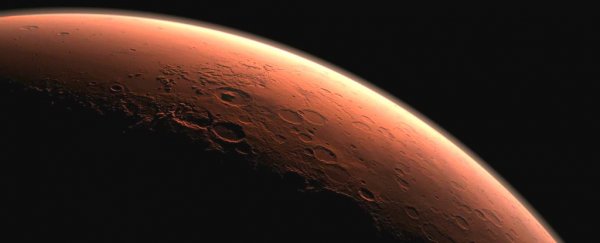NASA's 15-year-old Opportunity rover has had a rough couple of weeks on Mars.
Back on May 30, a pretty big dust storm was spotted on the Martian surface, and Opportunity was right in its path. Since then, it's only gotten bigger.
On June 12, it had reached 35 million square kilometres (14 million square miles), basically covering a quarter of the planet.
And earlier this week, NASA has confirmed that the storm is now a 'planet-encircling' or 'global' dust event, and showing no signs of backing off soon.
As soon as the storm hit, solar powered Opportunity put itself in a low power mode to preserve the energy it has.
The other rover on Mars, Curiosity, is nuclear powered, so has been living large studying the effects of the dust storm on the other side of the planet.
If Opportunity still has power it will be using the energy to keep its internals warm, and power a mission clock to check on power levels throughout the storm.
While the storm's dust prevents Opportunity from topping up its solar power to keep heating itself, the heat absorbing dust is probably keeping the temperatures around the rover more stable and warmer than usual.
"There still was no signal received from NASA's Opportunity rover, despite efforts to listen in case it's coming out of sleep during its fault window – the period of time when it attempts to communicate," explains a NASA Rover Status Report.
"A recent analysis of the rover's long-term survivability in Mars' extreme cold suggests Opportunity's electronics and batteries can stay warm enough to function."
"That doesn't stop them from listening for the rover every day," they added.
But although this close call might be pulling hard on our heart strings, Opportunity has endured worse in the past.
In 2007 Opportunity weathered an even bigger dust storm on Mars. For nearly a month, a series of dust storms on the red planet caused Opportunity and its now dead partner Spirit to enter power saving mode again.
"We're rooting for our rovers to survive these storms, but they were never designed for conditions this intense," Alan Stern, associate administrator of NASA's Science Mission Directorate, said at the time.
Both Spirit and Opportunity survived past storms, so we're holding out hope that NASA's longest serving active rover can come through again.
